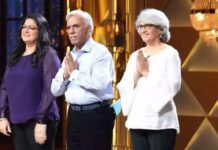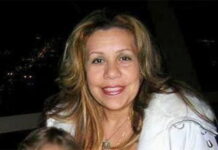Dara Singh Biography: Dara Singh Randhawa, also known as Deedar Singh Randhawa, was born on November 19, 1928. He was a former wrestler. Throughout the course of his life and career, Dara Singh donned a variety of headwear. Singh was also a producer, member of parliament, and a filmmaker, in addition to being an actor and wrestler.
Dara Singh Biography
Early Years
Dara was born in the British Punjab village of Dharamchuk, which is now Amritsar, India. In 1947, he moved to Singapore to work as a watchman for a drum manufacturing facility and to train under Harnam Singh in the Great World Stadium. Dara’s physique inspired him to take up the Indian technique of wrestling known as “pehlwani” before he began professional training. Since then, he has travelled the globe and defeated numerous adversaries, including Bill Verna, John Da Silva, Ski Hi Lee, and King Kong. He won the 1959 Commonwealth Championship in Calcutta (Kolkata) by defeating George Gordienko. In 1968, he defeated Lou Thesz, a six-time World Champion from Michigan, United States, to win the World Wrestling Championship. After his final tournament in Delhi, he retired from professional wrestling in June 1983.
Personal Life
On November 19, 1928, Dara Singh was born to Surat Singh and Balwant Kaur. He wed Bachno Kaur at the age of 14 and had a son at the age of 16. After he moved to Singapore, they became estranged, and in 1961 Dara wed Surjit Kaur. He has three daughters and two sons, including actors Vindu Dara Singh, Parduman Randhawa, and Amrik Singh Randhawa, who is also an actor and a film producer.
Dara Singh Movie Career
Dara began his acting career in 1952 with the film Sangdil, but he spent many years as a stunt actor before starring in the 1962 Babubhai Mistry film King Kong. Other films in which he starred include Samson, Lutera, Faulad, Sikander-e-Azam, and Rustom-e-Ind. Dara and Mumtaz have acted in 16 films together since 1963, making them the highest-paid B-grade actors, with Dara earning INR 4 lakhs per film and Mumtaz earning INR 2.5 lakhs per film. He subsequently appeared in numerous Punjabi and Hindi (Bollywood) films.
He appeared in the 1987 film “Mard” alongside Amitabh Bachchan. Manmohan Desai, the film’s director and producer, was certain that no one else could portray “Mard’s” (Amitabh’s character) father other than Dara. His last Hindi film was the 2007 romantic drama Jab We Met, in which he played the grandfather of Kareena Kapoor Khan’s character Geet. His last Punjabi film was Dil Apna Punjabi, which also starred Harbhajan Mann and Neeru Bajwa, and in which he portrayed the head of a Punjabi family, Sardar Hardam Singh.
He set up his imprint Dara Film in 1970 and directed seven Punjabi films including Sawa Lakh Se Ek Ladaun, Nanak Dukhiya, Rab Dian Rakhan and two Hindi films Bhakti Mein Shakti and Rustom (1982).
He has produced two films, including the 1978 film Bhakti Mein Shakti, in which he portrayed the role of Dyanu Bhakt, and the 1994 action film Karan, starring his son Vindu Singh and actress Trishna.
Samantha Fekete Biography: Age, Height, Birthday, Family, Net Worth
Television Profession
His performance as Hanuman in the late 1980s television adaptation of the Hindu epic Ramayana is ingrained in the minds of the audience. He also portrayed Hanuman in the 1988 television adaptation of Mahabharata. In 2004, he appeared in the television series Family Business, and in 2006, he portrayed Amardeep Sehgal (Dadaji) in Kyaa Hoga Nimmo Kaa.
As a Political Leader
As the first athlete to be nominated to the Rajya Sabha, he held office from 2003 to 2009.
Honours and distinctions
In 1996, Singh was inducted into the Hall of Fame of the Wrestling Observer Newsletter. Dara was included on the list of India’s greatest wrestlers of all time in 2016. On April 7, 2018, WWE inducted him into the 2018 cohort of WWE Hall of Fame Legacy.
Dara Singh Death Anniversary
On 7 July 2012, Singh was admitted to Kokilaben Dhirubhai Ambani Hospital after suffering a catastrophic heart attack. Two days later, it was verified that the lack of blood flow had caused brain damage. On 11 July 2012, he was released from the hospital with the prognosis that nothing could be done to prolong his life. He died the following day at his residence in Mumbai. At the Juhu crematorium, he was cremated.




